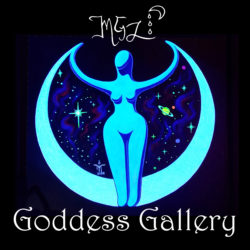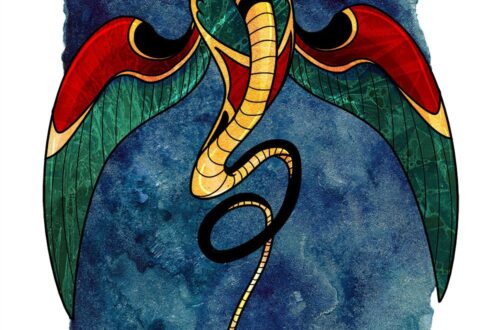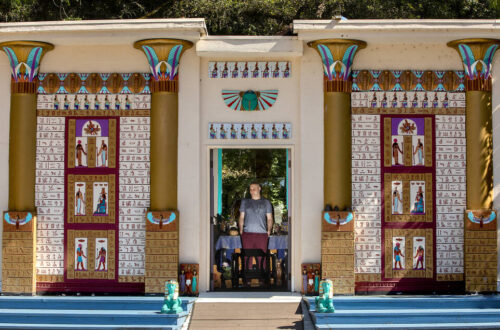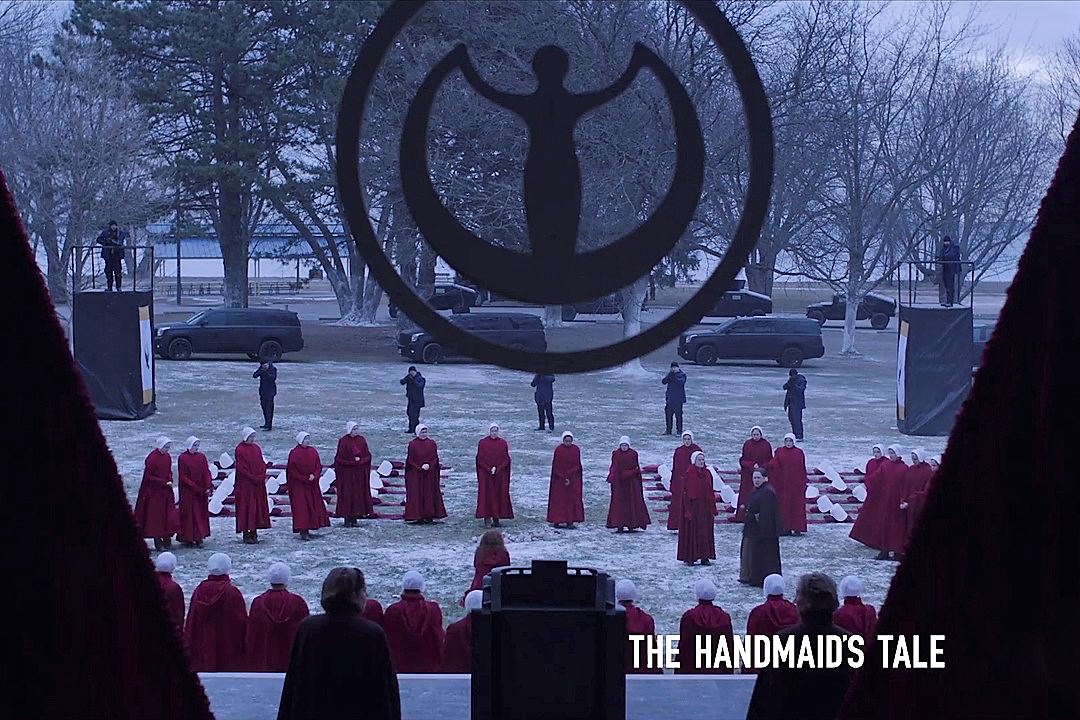
The Goddess in The Handmaid’s Tale
by Kirsten Johnsen, Archivist
In 2017, MGM and Hulu produced a television series adapted from Margaret Atwood’s 1985 dystopian novel, The Handmaid’s Tale. Unbeknownst to Oberon Zell, they used Morning Glory’s personal sigil named the “Astra, Star Goddess” in the set and costume design as the symbol for the oppressive Red Center where kidnapped women are indoctrinated to sexual and reproductive slavery for use by the male elite of the intensely patriarchal regime of Gilead. This contorted subversion of Morning Glory’s design caused considerable distress to the pagan community, as her symbol was created to express the power and beauty of women’s sexual and spiritual empowerment, the opposite of the fictional Red Center. Not only was the Astra a personal sigil for our beloved Morning Glory, it was also the original logo for Oberon and Morning Glory’s family business Mythic Images. Moreover, the Astra Star Goddess has been for sale under the Oberon Zell line as a pendant and earrings by the internationally renowned manufacturer Peter Stone Jewelry for decades. In fact, the original Astra design was sold as a wall placque for home altars. In the early 1990’s a women’s domestic violence shelter outside of Toronto in Canada received permission to use the Astra wall placque image for personal awards for survivors of sexual abuse. Clearly someone at MGM really messed up their design research.

As Oberon pursued resolution of this infringement of his artistic property and copyright, Kirsten Johnsen attempted to exert political pressure on the creators of the show by engaging a coalition of foremothers of the Women’s Spirituality movement. This group worked collectively to explain to MGM the harm being done to people who follow spiritual traditions honoring the sanctity of women’s bodies. Through personal connections, this group was able to dialogue with Margaret Atwood directly, who quickly came to understand the gravity of the use of a perverted spiritual symbol in the portrayal of her famous dystopia. Through her heroic advocacy and direct action, Oberon was able to finally negotiate an agreeable settlement for the appropriate licensure of his design.
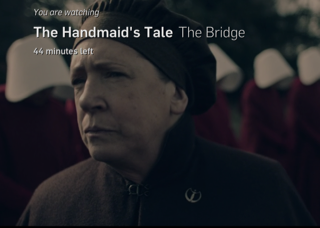
The use of the Astra symbol as an emblem of the violent sexual oppression of women in the first season of The Handmaid’s Tale is difficult to watch. In the second season, the image is used less often (probably because MGM had been made aware of the controversy of its use), but significantly, one scene briefly portrays the symbol’s original association with women’s empowerment.

Margaret had made the suggestion for the development of an appropriate backstory for the Astra, and someone in the set design department had understood the importance of creating a positive connotation.
We are hopeful that future seasons of The Handmaid’s Tale will expand on this backstory in a way that can both enhance the developing storyline and offer viewers a symbolic through-line to healing from sexual abuse. The Astra symbol conveys the transformative power of the Goddess as experienced through natural cycles of embodiment. The use of this image subverted to its diametrical opposite represents a distortion of meaning that only reinforces the power it contains in the collective psyche. Yet a full retrieval from its pathological perversion is only fully possible when we reclaim its potency for the healing it was created to represent. This is action within our power.

MGM’s production of The Handmaid’s Tale has inspired a plethora of imagistic direct action against forces of oppression against women. It is up to us to reclaim Morning Glory’s personal sigil as an emblem of spiritual and sexual empowerment. We can do this in many ways, from contacting the producers of The Handmaid’s Tale through the many discussion forums available, to proudly wearing Astra jewelry and educating people on the symbol’s true meaning.


